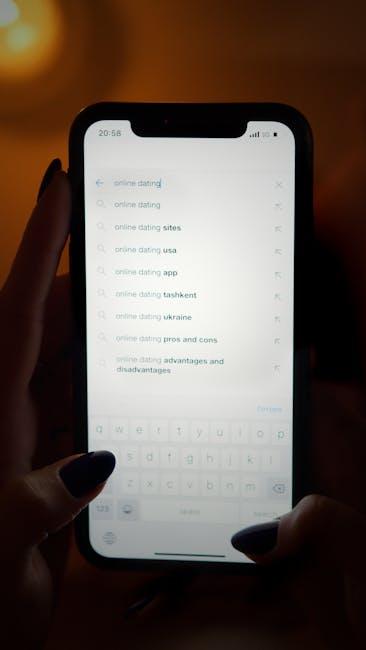In the digital age, where swipes and clicks have become the modern preludes to romance, dating platforms serve as the bustling agora for hearts seeking connection. Yet, beneath the surface of perfectly curated profiles and charming bios lies a pressing question that echoes in the corridors of online dating: should these platforms do more to verify the authenticity of their users? As tales of digital deception and catfishing continue to emerge, the debate over user verification intensifies, balancing the scales between privacy and security. This article delves into the intricate dance between trust and technology, exploring whether dating platforms hold the responsibility to transform from mere matchmakers into vigilant guardians of genuine connection.
Ensuring Authenticity in the Digital Dating Scene
In the rapidly evolving digital dating landscape, the question of user verification becomes more pertinent than ever. As online dating becomes increasingly popular, the demand for platforms to ensure user authenticity grows. Many users have experienced the disappointment of encountering fake profiles, leading to a loss of trust in the system. To combat this, dating platforms could implement more robust verification processes. Is it time for platforms to step up their game and provide users with a safer experience?
Some potential measures that could be adopted include:
- Photo Verification: Requiring users to upload a real-time photo that matches their profile pictures.
- Social Media Integration: Allowing users to link their social media accounts to verify their identity.
- ID Verification: Offering optional ID checks for users who wish to add an extra layer of authenticity.
- Behavioral Monitoring: Utilizing AI to detect suspicious activities and flag potential fake accounts.
By incorporating these measures, dating platforms can enhance trust and create a more genuine environment for users to connect. While there are concerns about privacy, the benefits of user verification in reducing catfishing and other deceitful practices could outweigh the risks. Ultimately, fostering a culture of transparency might be the key to ensuring a safer and more authentic online dating experience.

Balancing Privacy and Safety in User Verification
In the digital age, ensuring user security while respecting personal privacy is a delicate dance that dating platforms must master. On one hand, thorough verification processes can significantly reduce the risk of encountering fake profiles and potential scammers. On the other hand, overly intrusive methods might deter users who value their anonymity and fear the misuse of personal information. Striking the right balance requires platforms to adopt innovative solutions that enhance trust without compromising user privacy.
- Transparency: Clearly communicating the purpose and extent of data collection can help build user trust.
- Opt-in Verification: Allowing users to voluntarily verify their profiles can offer an extra layer of security without mandating it for everyone.
- Data Minimization: Collecting only essential information needed for verification can help protect user privacy.
Ultimately, the goal is to foster a secure environment where users feel safe to connect, all while ensuring that their personal data remains protected. By leveraging technology like AI and blockchain, dating platforms can enhance their verification processes, making them both effective and respectful of user privacy.
The Role of Technology in Enhancing User Trust
In the digital age, technology plays a pivotal role in fostering trust among users, particularly on platforms where personal connections are formed. Advanced verification technologies have emerged as essential tools in ensuring the authenticity of user profiles on dating platforms. These technologies can include:
- AI-driven identity verification, which uses algorithms to cross-check profile information against official documents.
- Biometric authentication, such as facial recognition, which adds an extra layer of security.
- Blockchain technology to securely store and verify user data, offering transparency and immutability.
Such innovations not only deter fraudulent activities but also create a safer environment, encouraging users to engage more openly and confidently. By leveraging these technological advancements, dating platforms can significantly enhance user trust, ensuring that individuals can focus on meaningful connections rather than concerns about authenticity.

Strategies for Effective User Verification on Dating Platforms
To ensure the authenticity and safety of users on dating platforms, implementing robust verification strategies is crucial. One effective approach is utilizing multi-factor authentication (MFA), which combines something users know (like a password) with something they have (such as a mobile device) or something they are (biometric data). This layered security method not only deters malicious actors but also instills confidence among genuine users. Additionally, integrating AI-driven algorithms can help in detecting suspicious activities by analyzing user behavior patterns, flagging potential catfish or fraudulent profiles before they cause harm.
Another strategy is encouraging community involvement in the verification process. Dating platforms can foster a sense of trust and community by implementing features that allow users to report suspicious profiles or behavior. This can be complemented by a verification badge system, where users undergo a verification process that includes providing official identification or linking to verified social media accounts. By offering incentives, such as increased profile visibility for verified users, platforms can motivate more individuals to authenticate their identities, thereby creating a safer and more trustworthy environment for everyone.








